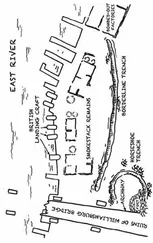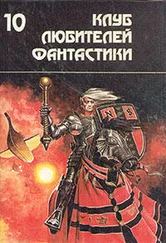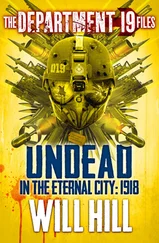Only a handful got near the enemy’s mobile task force. Even if they went down to anti-aircraft fire, merely getting that close must have been satisfying for the pilots.
After the kamikazes were shot down by enemy fire, the guard contingent was free to engage hostiles, but we usually didn’t dare to. Surrounded by numerous enemy aircraft, it was all we could do to save our own hides. Not to mention that these were F6Fs or Sikorskys, both far superior to the Zero. Had we at least been evenly matched in number, we might have been able to put up a fight, but against a horde of them there was no hope of winning.
The moment you got on the tail of an enemy, another one of them would simply latch onto yours. If you kept firing on the aircraft in your sights you might shoot it down, but you’d end up dead, too. Plus, it took more than a few bullets striking home to take down an American fighter, whereas a single hit could demolish a Zero.
The American pilots were far more competent than they had been at Rabaul two years before, which is why fighter pilots on escort duty were frequently shot down as well. On some missions, not a single plane, the escort included, returned to base.
And by that time, our planes’ readiness quotient had sharply declined. Factories in the interior had been ravaged by air raids, rendering them incapable of producing sufficient numbers of aircraft. Many planes simply weren’t capable of flight, and more than a few faltered after takeoff. In fact, nearly every day we had kamikazes who were forced to return to base due to engine problems. A number of fighters made emergency landings on Kikaijima Island, but the unlucky ones fell into the ocean.
I didn’t forget about Miyabe even while I was escorting kamikazes.
At night, I would lie on an embankment by the runway looking up at the stars, and time and again my thoughts would turn to him. I’d wonder if he was gazing up at the same stars at that moment. Then I’d think to myself, Don’t you die yet, Miyabe. When you die, I have to be there to witness it.
The Battle of Okinawa lasted for about three months.
During the period, I sortied countless times as part of the guard contingent, or flew on ahead of the kamikaze squad as part of the air supremacy team, engaging enemy aircraft lurking in the skies. On a few occasions, I shot down some enemy fighters before returning to base.
The Americans had captured Okinawa completely by the end of June. Including those launched by the Army, over 2,000 kamikazes perished.
Since we’d already lost Iwo Jima in March, losing Okinawa meant that America had filled our moat.
For some time before then, the urban areas of Japan had been under near-constant attack from B-29 bombers launching from Saipan. And after Iwo Jima had fallen, the bombers were escorted by P-51 fighters. In the face of attacks carried out by massive formations of bombers and fighters, the air defense units at various bases around Japan were no more than bugs.
I participated in a number of those battles. The P-51 was an incredible fighter. Those monsters were beyond formidable.
The performance gap between the P-51 and the Zero was so vast it was like comparing an adult and a child. The P-51’s cruising speed was 600 km/h, while even at top speed a Zero couldn’t hit 600 km/h. Cruising speed is the speed at which an aircraft has maximum fuel efficiency. A Zero’s cruising speed was just over 300 km/h, while the P-51’s top speed was over 700 km/h. Their bulletproofing and armament were far superior to that of the Zero, too. Moreover, these monsters could leisurely fly from Iwo Jima to the mainland, partake in plenty of fighting, then head on back to Iwo Jima. Zeros had flown between Rabaul and Guadalcanal, but this was an even greater distance.
The P-51’s high-altitude performance was extraordinary, and it could readily dogfight at 8,000 meters above sea level. Flying at all was the most that Japanese fighters could do at that height. The engines complained loudly if we forced them to work where oxygen was so scarce. And it got so cold up there that dogfighting would be the last thing on our minds. Our cockpits were fitted with oxygen masks, but there was no protection from the cold. It was not a cockpit designed to withstand double-digit subzero temperatures. Which is why we could only throw up our hands when the B-29s were escorted by P-51s. No other fighter existed that could take on a P-51 at 8,000 meters.
We fought with everything that we had, but every time our fighters sortied to intercept incoming enemy aircraft, they were mercilessly shot out of the sky.
The P-51s and Grummans would nonchalantly drift down and strafe targets on the ground, too. Buildings, trains, automobiles, people. They had no issue with gunning down civilians running about trying to flee. I don’t think they considered Japanese to be human beings. I bet those pilots took shots like they were hunting animals.
But when they came down to lower altitudes, we had a chance to strike back. I shot down P-51s just once, in June of 1945. I had gone out to meet incoming aircraft after a report came in, and on my way back after failing to apprehend enemy aircraft, I discovered a flight of four P-51s firing on a train.
I attacked them from above. They immediately noticed me, but surprisingly, only one of the four turned to challenge me. The other three were going to sit back and watch. I suppose that by then, they considered Japanese planes to be unworthy of their consideration.
At that point, most of the pilots in the Japanese military were barely better than novices, and there were hardly any who could take on the high-performance American military aircraft, not to mention the P-51, which was an invincible fighter. I imagine the pilot of the one that turned towards me had told his fellow pilots over the wireless, “He’s mine to kill, so stay out of it.” And I’m sure the other three looked on with smirks on their faces. Even though we were at low altitude, the P-51 was challenging me to a dogfight.
I wasn’t some rookie, however. I had survived Rabaul, “the Airmen’s Graveyard.” And Zeros were robust fighters at lower altitudes. After dodging a shower of bullets fired by the P-51, I made a hard turn and ended up on his tail. He slid away, trying to escape, but it was too late. I fired my 20-mm cannons and tore off one of his wings.
After witnessing their comrade’s demise, the remaining three fell into formation and came after me from above. I ascended, evading their attacks. I ducked two of them and they flew out ahead, but the third pursued me. He revved up his engine and rapidly drew close. Just then, I went into a barrel roll. He followed. Idiot! I made a tight turn, curving back and pulling up behind him. He panicked and tried to escape by going into a dive, as per their usual tactics, so I could predict his every move. I readied a deflection shot, aiming ahead on his dive trajectory, and fired my 20 mms. I watched as my bullets shattered his windshield. He went into a tailspin and crashed.
The two remaining fighters descended, apparently intending to catch me in a pincer attack. I pulled up, aiming my Zero directly towards one of them. He let loose a barrage of bullets like he was throwing so much sand, but I took careful note of his axis line. All of the tracer bullets went high, passing over my head. Afraid that I was trying to ram into him, he hurriedly swerved right. This was suicide. I fired off every bullet I had left in my machine guns. Black smoke spurted from the underside of the P-51 and it fell away towards the mountains.
The last P-51 had fled and was already far away.
That was the only time I shot down P-51s. I’m not trying to brag or anything. They had made the mistake of dogfighting a Zero at low altitude, and their piloting skills had been rudimentary. Things would have turned out differently against better pilots at high altitude.
Читать дальше

![Nick Cracknell - The Quiet Apocalypse [= Island Zero]](/books/28041/nick-cracknell-the-quiet-apocalypse-island-zero-thumb.webp)










